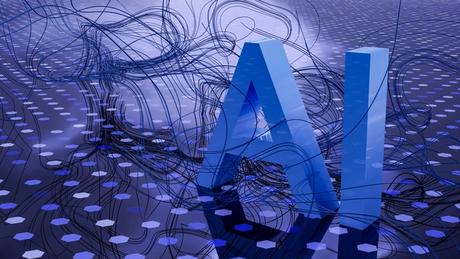Artificial Intelligence (AI) in Remote Patient Monitoring
According to Statista, artificial intelligence (AI) in the healthcare industry was valued at $11 billion in 2021 and is expected to be worth $187 billion by 2030.
AI in healthcare has numerous advantages. AI provides opportunities to help reduce human error, assist medical professionals and staff, and provide 24/7 patient services. On the other hand, it also has drawbacks, such as sharing data with an excessive number of endpoints, algorithm biases, and much more.
The amount of biometric and contextual data on clients processed using AI has skyrocketed. The ethical question is what to do with the data.
This article explores how to utilize artificial intelligence (AI) in healthcare, focusing on practical applications, minimizing drawbacks, and addressing ethical concerns. Learn how AI can modernize the virtual healthcare sector and transform patient care.
Types of Artificial Intelligence (AI) in Healthcare
Artificial intelligence (AI) technologies play diverse roles in healthcare, particularly in remote patient monitoring (RPM). Here are key AI technologies transforming RPM:
- Machine Learning: This involves training computers to recognize patterns and make data-driven decisions. In healthcare, it uses patient data to predict outcomes and personalize treatments, improving care quality over time.
- Internet of Things (IoT) and IoMT: IoT refers to the collective network of connected devices and the technology that facilitates communication between devices. IoMT is the branch of IoT in healthcare that connects devices like sensors and medical equipment to monitor patients remotely. This real-time data helps in proactive healthcare management, enhancing patient outcomes through early intervention and personalized care plans.
- Robotic Process Automation (RPA): RPA automates repetitive tasks in healthcare administrative processes, such as updating records and scheduling appointments. It reduces errors, saves time, and allows healthcare professionals to focus more on patient care.
- Rule-Based Expert Systems: These systems use predefined rules to assist in diagnosing and suggesting treatment plans based on patient data and symptoms, supporting quick decision-making in healthcare settings.
- Natural Language Processing (NLP): NLP improves patient care and administrative efficiency by analyzing and extracting information from medical documents. It also enables communication between healthcare providers and patients through a medical AI chatbot, facilitating better access to medical information.
These AI technologies are pivotal in addressing healthcare challenges, enhancing remote patient monitoring, and ultimately improving patient outcomes.
What Healthcare Problems Does Artificial Intelligence Resolve?
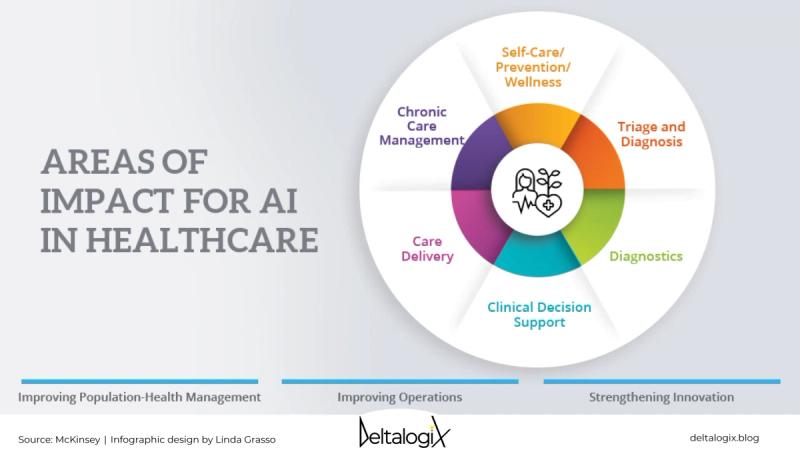
(Source: Link)
Artificial Intelligence (AI) plays a crucial role in enhancing efficiency and resolving various healthcare challenges through Remote Patient Monitoring (RPM).
Appointment Scheduling & Patient Registration: AI streamlines appointment scheduling by replacing manual systems with smart scheduling assistants. These automated systems manage patient queries, offer available slots, send automated reminders, and provide aftercare messages via mobile health apps and emails. Patients can book appointments through AI-driven platforms, ensuring efficient scheduling and better patient experience.
Patient Check-ins: AI simplifies the check-in process by automating tasks that traditionally require manual effort. Medical AI chatbots improve customer service by speeding up check-ins, reducing waiting times, and minimizing errors. This enhances overall patient satisfaction and operational efficiency.
Disease Diagnosis: AI supports quick and accurate diagnosis through telemedicine software equipped with intelligent diagnostic tools. These tools aid healthcare professionals in remote consultations, enabling precise diagnosis even in complex medical cases.
Treatment Plan: AI algorithms personalize treatment plans based on patient data analysis, including medical history and treatment responses. This ensures tailored healthcare strategies that optimize patient outcomes and treatment effectiveness.
Patient Health Monitoring: In critical healthcare scenarios, AI-powered solutions like chronic care management software, mobile health apps, and wearable devices enable continuous patient monitoring. These technologies facilitate effective patient care and monitoring, especially for elderly patients, by leveraging AI analytics and remote patient monitoring systems.
Medical Billing: AI enhances the medical billing process by reducing errors and accelerating reimbursement cycles. AI-backed solutions streamline billing operations, ensuring faster and more accurate processing of medical bills and claims.
Processing Insurance Claims: AI improves the speed and accuracy of healthcare insurance claim processing. By analyzing data swiftly and predicting potential issues, AI minimizes delays and denials, enhancing the efficiency of claim management and patient satisfaction.
Manage Patient Records: AI simplifies patient record management through electronic medical records (EMR) software. These solutions ensure fast data retrieval, accuracy, and compliance with healthcare regulations such as HIPAA and GDPR, thereby enhancing data security and operational efficiency.
AI in healthcare addresses diverse challenges, making it possible to manage complex tasks effectively and deliver continuous patient care. In the next section, we explore AI applications in remote patient monitoring and its impact on improving patient outcomes.
Real-Life Applications of AI in RPM
This section explores the power of AI in remote patient monitoring and highlights real-life examples that showcase its immense potential.
The new era of personalized healthcare
AI in remote patient monitoring has ushered in a new era of personalized healthcare. AI algorithms can create individualized patient care and treatment plans by analyzing vast amounts of patient data, including medical history, vital signs, and lifestyle choices.
Real-life Example #1
A patient with diabetes may utilize an AI-powered remote patient monitoring system that tracks their blood glucose levels, physical activity, and dietary habits. Based on the data, the AI algorithm recommends personalized meal plans and exercise routines, leading to better glycemic control and reduced risk of complications.
Early Detection of Complications
AI in remote patient monitoring enables early detection of primary care health issues, sometimes identifying them before they show noticeable symptoms. In remote patient monitoring, AI algorithms continuously analyze patient data to identify subtle changes in vital signs or symptoms that may indicate potential health risks.
Real-life Example #2
A patient with severe heart issues uses an AI-driven remote monitoring device that tracks their heart rate, blood pressure, and respiratory rate in real-time.
The AI algorithm detects irregular patterns in the patient’s vital signs, signaling the possibility of an impending heart failure exacerbation. In this scenario, a qualified healthcare professional receives an alert. The healthcare provider can then adjust the patient’s medication and prevent hospital admission promptly.
Predictive Analytics for Disease Progression
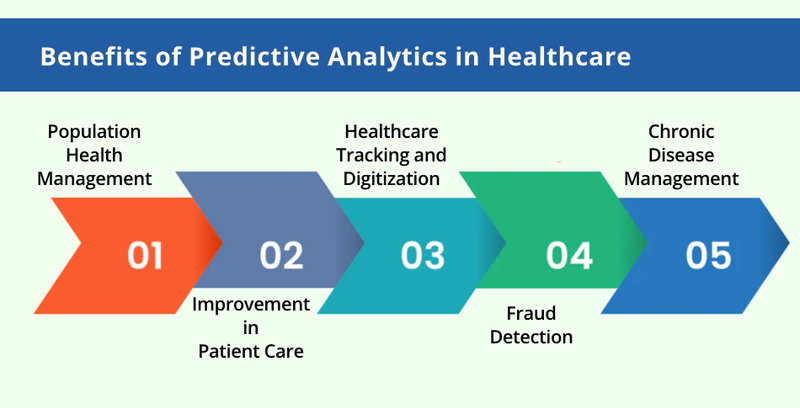
(Source: Link)
Vital signs such as temperature, pulse, respiratory rate, and mean arterial pressure are continuous predictors of emergency department visits. AI-powered predictive analytics are crucial in remote patient monitoring by forecasting disease progression and potential complications.
These algorithms analyze historical patient data, current health metrics, and other relevant factors to predict the likelihood of certain health events occurring in the future.
Real-life Example #3
A patient with chronic obstructive pulmonary disease (COPD) uses an AI-enabled remote pulse oximeter device. The RPM device tracks lung function, oxygen levels, and respiratory symptoms. The AI algorithm analyzes the collected data and identifies patterns indicating a higher exacerbation risk.
The patient’s healthcare team receives an alert, allowing them to adjust medication and provide timely interventions, thereby preventing severe respiratory episodes and hospitalizations.
This illustrates AI’s predictive capabilities in enhancing RPM by identifying potential complications before they escalate. Predictive measures lead to improved patient outcomes and a higher quality of life for individuals managing chronic conditions.
Patient and Provider Perspectives on AI
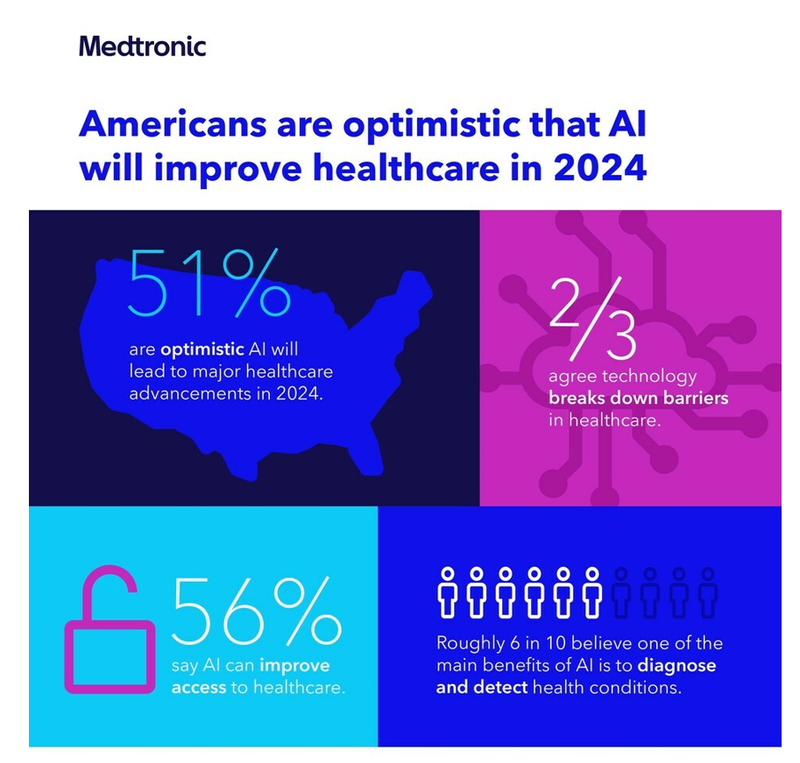
(Source: Link)
Patients' Point of View
A survey by Morning Consult revealed that about 70% of US adults have concerns about the increased use of AI in healthcare. Baby Boomers showed the most concern at 77%, followed by Gen X at 70% and Millennials and Gen Z at 63%.
Most people prefer important healthcare tasks to be led by medical professionals rather than AI, with 84% preferring a provider to prescribe pain medication, 80% for diagnosing a rash, 71% for reading a scan, and 69% for managing a patient's diet.
Perceptions differ by medical specialty. Parents are mainly concerned about diagnostic errors and incorrect treatment recommendations in computer-assisted healthcare for children.
However, many parents see benefits such as rapid diagnosis and catching early symptoms that might be missed by humans. The majority of parents are comfortable with AI in scenarios like determining the need for antibiotics, radiograph interpretation, and bloodwork.
Overall, children and youth generally have a positive view of artificial intelligence (AI) in healthcare, showing significant knowledge and a desire to be involved in AI research and deployment. Across demographics and specialties, patients believe AI will improve healthcare in the long term.
Provider and Medical Student Perspectives
Providers' perspectives on AI are critical for patient trust and outcomes. If providers do not trust AI tools, patients are unlikely to feel comfortable with them.
Acceptance of AI involves balancing multiple factors, such as the perceived loss of professional autonomy and difficulties integrating AI into clinical workflows. Including end-users in early development stages and providing appropriate training can facilitate AI acceptance.
A study by Researchgate shed some light on how professionals feel. Radiologists and medical students are particularly concerned about healthcare AI. Concerns among medical students and interns include the impact of AI on their specialty choice and the need for AI training in medical school curricula.
Recruitment challenges in radiology arise due to AI concerns, with some medical students believing AI could make the specialty obsolete. Researchers argue that misinformation about AI contributes to these challenges and emphasize AI's potential to support radiologists and advance the field.
How Can Healthcare Providers Leverage the Full Potential of AI in RPM?
Remote patient monitoring (RPM) plays a very important role in managing patient health and making interventions when needed. For a better understanding of RPM, one should get to the basics of remote patient monitoring and how it works. By gaining the full potential of AI in RPM, healthcare providers can:
Invest in Advanced AI Technologies: Arm the RPM systems with advanced AI tools for more efficient predictive analytics and personalization.
Enhance Data Analytics Capabilities: Improving data analytics capabilities by developing frameworks that allow one to obtain actionable insights from the data available in RPM.
Prioritize Operational Efficiency: Automate monitoring tasks to more effectively reallocate resources in areas of high need.
Expand Access Through Scalability: AI can extend Telehealth services to underserved populations.
Foster Continuous Improvement: Embrace a data-driven culture regarding the use of insights in enhancing services.
Some of the frequently asked questions about RPM can help us understand more about it and how it can be used with AI integration. In the next section, we will discover how AI-enabled RPM helps improve healthcare delivery. It also gives us a basic overview of the triple aim in healthcare and how it is achieved.
How AI-Enabled RPM Can Improve Healthcare Delivery

(Source: Link)
Healthcare has three main goals: improving the care experience, enhancing health outcomes, and reducing costs, known as the Triple Aim of Healthcare. Achieving these goals can be challenging for people even if they successfully know how to build a healthcare app or have existing healthcare solutions, but AI offers a solution.
AI can help healthcare organizations better use their data, redefining care delivery and making it easier to achieve the triple aim. One key AI tool is remote patient monitoring (RPM), which uses digital technology to monitor patients' vitals and health data outside traditional healthcare settings.
This tech securely sends health information between patients and providers, leading to better clinical decisions, better telehealth services, earlier interventions, and more preventive care. Top RPM apps enabled with AI support patient enrollment, engagement, and education, ensuring adherence and reducing administrative work.
Promoting Clinical Efficiency
AI-enabled RPM gathers data passively, allowing clinicians to focus on diagnosing, educating, and treating patients, thus improving productivity and care efficiency.
Clinicians no longer need to request health status information frequently or wait for the next visit to adjust care plans. Instead, constant health data transmission highlights critical cases, enabling preventive and personalized care.
Delivering Better Outcomes
RPM shifts healthcare from reactive to value-based preventive care by providing continuous data access. This is crucial for patients with chronic diseases like hypertension, heart failure, diabetes, and obesity.
Studies show RPM significantly lowers blood pressure, reduces heart attack and stroke rates, and improves blood glucose levels and weight reduction. AI-enabled RPM can also increase patient adherence by up to 36%, helping clinicians spot trends and adjust care plans and other telehealth services for better outcomes.
Reducing Costs
With rising chronic disease rates and healthcare costs, AI-enabled RPM is the future of healthcare delivery. It meets the triple aim by reducing hospitalizations, deaths, and per-patient costs. A study by ScienceDirect shows that AI in healthcare can potentially cut down healthcare costs in the US by $150 billion by 2026 by shifting from reactive to proactive health management.
Achieving the Triple Aim
AI and RPM together enable earlier detection of health issues, quicker interventions, fewer emergency room visits, and reduced hospitalizations. This enhances healthcare provider support, improves patient outcomes, boosts financial performance, and addresses complex healthcare challenges.
Overcome Technological Barriers with Raftlabs

(Source: Link)
In the ever-evolving technology landscape, businesses often face significant challenges in harnessing the full potential of AI (artificial intelligence) and RPM (remote patient monitoring).
RaftLabs helps with innovation, guiding organizations through technological barriers with precision and expertise. Our commitment to excellence and developed solutions ensure that your business not only adapts but thrives in the digital age.
Building Healthcare Solutions with Raftlabs
At RaftLabs, we understand the complexities and challenges involved in implementing AI and RPM technologies. We develop solutions to address these hurdles effectively:
Machine Learning Expertise: We develop advanced machine learning models that analyze vast datasets, automate routine tasks, and enable smarter decision-making. It reduces errors and optimizes operational efficiency.
Predictive Analytics: We leverage predictive analytics to help businesses forecast trends and customer behavior, allowing for proactive strategy adjustments and risk mitigation.
Computer Vision: We develop computer vision solutions to enhance image and video analysis capabilities, enabling applications like object recognition and anomaly detection, which expand the functionality and accuracy of AI systems.
Natural Language Processing (NLP): We use NLP to bridge communication gaps, creating an intelligent medical AI chatbot and sentiment analysis tools that enhance user engagement and global reach.
Custom AI Solutions: We tailor AI solutions to meet each business's unique challenges, ensuring that the technology aligns with specific operational needs and strategic goals.
Remote Patient Monitoring (RPM): We develop RPM applications to improve patient outcomes by facilitating continuous monitoring, reducing healthcare costs, and increasing patient satisfaction through seamless integration with existing healthcare systems.
Case Studies:
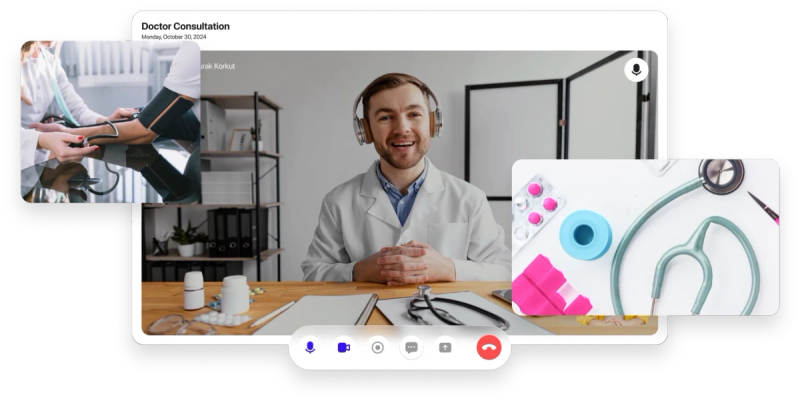
Outcome: 30% increase in patient engagement, 50+ clinics onboarded in 12 weeks, and a 60% reduction in in-person visits.
Client Testimonial: "The app is a lifesaver! Now I see my doc for checkups without leaving the house." - John Miller, Patient.
2. Remote Patient Monitoring App
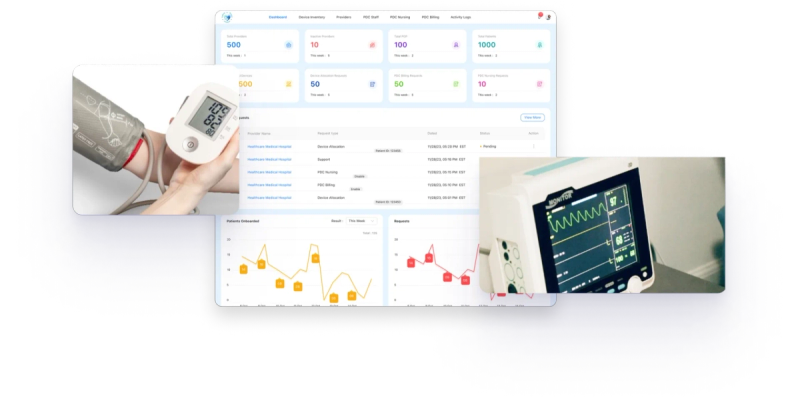
Outcome: Support for 4+ devices like CGM and BPM, 25+ clinics enrolled in 60 days, and 100% secure and HIPAA compliant.
Client Testimonial: "PDC is great for our clinic. It's easy to use, and it helps us communicate better with patients." - Dr. Smith, Primary Care Physician.
What is the Future of AI in Healthcare?
Future Predictions for AI
With the ever-changing state of technology today, better innovations are yet to come. Therefore, technology is likely to play a much more critical role in shaping the future.
How should we prepare ourselves for this? It's quite simple: raise awareness and continually educate ourselves. AI may seem unreal for its brilliant capacity to automate repetitive tasks and give man back his precious time.
Yet, it's a tool that can help us concentrate on more complex, creative tasks. For example, AI has the potential to help way too many people in many industries, such as doctors. AI can analyze medical images to save a patient's life.
Moreover, artificial intelligence is expected to play a huge role in the field of transportation. With the popularity of self-driving cars, highly advanced technology cars can be expected in the future. Further, AI can also optimize logistics and supply chains, elevating efficiency and cost-effectiveness.
With the right approach, the future of AI looks really promising. If approached correctly, we shall gain from the advancement of AI technologies while taming their challenges at the same time.
RaftLabs' Vision for Future Innovations in Healthcare:
At RaftLabs, we are dedicated to pushing the boundaries of what is possible in healthcare through AI. Our vision is to create innovative solutions that not only address current challenges but also anticipate future needs. Here’s how we are contributing to the future of healthcare:
Advancing Predictive Healthcare:
Initiative: We are working on building advanced predictive analytics tools that help healthcare providers foresee patient outcomes and manage potential risks proactively.
Impact: This leads to better patient management, fewer hospital readmissions, and overall improved healthcare quality.
Pioneering Personalized Treatment:
Initiative: We are evaluating AI solutions that harness vast amounts of data to offer personalized treatment plans tailored to individual patient profiles.
Impact: Patients receive care that is specifically designed for their unique needs, leading to more effective treatments and higher patient satisfaction.
Innovative Diagnostic Tools:
Initiative: We can help you build AI-driven diagnostic tools that enhance the accuracy and speed of disease detection through advanced image and data analysis.
Impact: Early and accurate diagnosis helps in timely intervention and better patient outcomes.
Enhanced Remote Patient Monitoring:
Initiative: We build RPM apps that offer continuous monitoring and real-time data analysis, which is particularly beneficial for chronic disease management.
Impact: Patients enjoy greater independence and better health management, with healthcare providers receiving critical data for timely interventions.
Sophisticated Telehealth Solutions:
Initiative: We create telehealth platforms integrated with AI capabilities to improve patient-provider communication and automate routine tasks.
Impact: Telehealth becomes more efficient and user-friendly, expanding access to quality healthcare.
Streamlined Healthcare Administration:
Initiative: We leverage robotic process automation tools to streamline administrative functions, reducing the burden on healthcare staff.
Impact: Healthcare providers can focus more on patient care, improving overall operational efficiency.
At RaftLabs, we are committed to being at the forefront of healthcare innovation. By leveraging the power of artificial intelligence (AI) in healthcare, we aim to create a future where healthcare is more predictive, personalized, and efficient, ultimately enhancing the quality of care for patients worldwide.
Conclusion
In this article, we explored the promising future of AI in healthcare and highlighted RaftLabs' significant role in this transformation.
We discussed key trends and predictions in healthcare, such as advanced predictive analytics, personalized medicine, AI-driven diagnostics, enhanced remote patient monitoring, sophisticated telemedicine solutions, and robotic process automation.
Each of these innovations will revolutionize patient care and improve operational efficiency in the healthcare sector. Don't let technology gaps disrupt your healthcare operations - let RaftLabs develop leading solutions in healthcare.
Contact us today to discuss how our skills in AI and RPM can help you achieve your goals for better health and the best outcomes. A Healthier Tomorrow, Built Together!
Frequently Asked Questions
What is AI in remote patient monitoring?
AI in remote patient monitoring involves using artificial intelligence technologies to collect, analyze, and interpret patient health data from remote devices. This helps healthcare providers make informed decisions, predict health trends, and offer personalized care without the patient needing to be physically present.
How does AI improve patient outcomes in RPM?
AI enhances patient outcomes by continuously analyzing health data to detect anomalies, predict potential health issues, and provide early warnings. This proactive approach allows for timely interventions, better management of chronic conditions, and personalized treatment plans, ultimately improving overall patient health.
What types of data can AI analyze in RPM?
AI can analyze a wide range of health data, including vital signs (like heart rate, blood pressure, and glucose levels), activity levels, sleep patterns, and other biometric information. It can also interpret data from wearable devices, electronic health records (EHRs), and patient self-reports.
Is patient data secure when using AI in RPM?
Yes, patient data is generally secure when using AI in RPM. Reputable RPM systems employ robust encryption and security protocols to protect patient information. Compliance with healthcare regulations such as HIPAA in the US also ensures that patient data privacy and security are maintained.
Insights from our team
Ready to build
something amazing?
With experience in product development across 24+ industries, share your plans,
and let's discuss the way forward.




